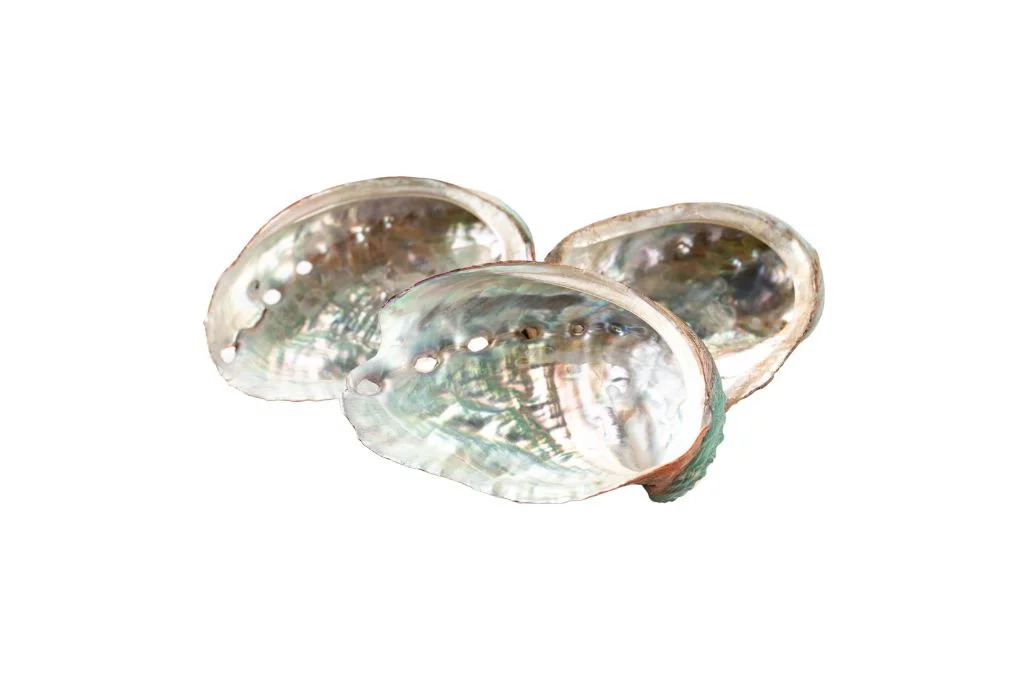The Iridescent Beauty of Abalone Shell
Abalone shell, a natural marvel from the sea, captivates with its mesmerizing appearance. This organic gem boasts a smooth, curved structure that reflects its origin as the protective covering of marine mollusks. The shell’s exterior is often rough and mottled, bearing the marks of its oceanic journey, while the interior reveals a spectacle of color and light.
A Symphony of Colors
The most striking feature of abalone shell is its vibrant, iridescent coloration. As light plays across its surface, it displays a shimmering array of hues, including blues, greens, purples, and pinks. This phenomenon, known as nacre or mother-of-pearl, is caused by the shell’s unique microscopic structure, which refracts light in complex ways.
Structural Marvels
Abalone shells are composed of layers of calcium carbonate platelets, held together by elastic biopolymers. This arrangement gives the shell both strength and flexibility, allowing it to withstand the pressures of its marine environment. The inner surface is remarkably smooth, polished by years of contact with the living abalone.
Unique Characteristics
One of the most distinctive aspects of abalone shell is its natural holes or perforations along the edge. These respiratory pores, used by the living abalone for breathing and waste excretion, add to the shell’s ornamental appeal. The shell’s shape is typically oval or ear-shaped, with a low, flattened spiral structure that makes it instantly recognizable.
A Crystal Unlike Any Other
While not a crystal in the traditional sense, abalone shell is often included in the world of healing stones and crystals due to its unique energetic properties. Its organic nature and connection to the sea set it apart from mineral-based crystals, offering a different kind of beauty and energy to those who work with it.
Historical and Cultural Significance of Abalone Shell
Abalone shells have held great importance in many coastal cultures throughout history. Native American tribes along the Pacific Coast prized abalone for its iridescent beauty and practical uses. The shells were used to make jewelry, decorative objects, and even as currency in some societies. In Maori culture of New Zealand, abalone (called paua) shells are deeply significant, often incorporated into traditional art and carvings.
Metaphysical Associations
In metaphysical circles, abalone shell is believed to possess powerful healing properties. It is associated with the water element and thought to promote emotional balance and inner peace. Many practitioners claim that abalone can enhance intuition, stimulate psychic abilities, and facilitate communication with higher realms. The shell’s iridescent qualities are said to inspire imagination and creativity, making it a favorite among artists and visionaries.
Common Uses and Applications
Abalone shells find diverse applications in both traditional and modern contexts. They are widely used in jewelry making, often inlaid into pendants, earrings, and bracelets. In interior design, abalone is incorporated into decorative objects, furniture inlays, and even as tiles in luxurious bathrooms. The shells are also popular in smudging rituals, serving as a natural, heat-resistant container for burning sage or other herbs. In some holistic practices, abalone shell water (water left in the shell overnight) is used for its purported healing properties.
Believed Benefits
Proponents of abalone’s metaphysical properties claim numerous benefits. It is said to soothe emotions, reduce stress, and promote a sense of calm. Some believe it can enhance the body’s natural healing processes and boost the immune system. In crystal healing, abalone is often used to address issues related to the heart chakra, fostering love, compassion, and emotional healing. Its connection to the sea is thought to help ground and center individuals, making it a valuable tool for meditation and spiritual practices.

